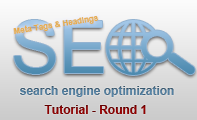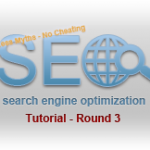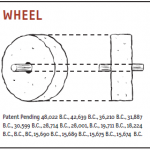SEO or Search Engine Optimization is a term that describes all the technics you can use to make your websites have better search results, without having to pay anything for it. Starting from this article we are going to examine everything we can do to make this possible.
Just to give you an idea, some of the things that can play a significant role or can affect your site’s search results are: Page Titles, Meta Tags, Links (Internal & Inbound), Headings (H1,H2..), Page Content, Anchor Text, Sitemaps, Breadcrumb Navigation, Alt attributes, URL’s structure, Site’s Structure, Geo-Location, Small Page Load Time – Server Location, changing Domain or changes to Navigation…OK, You get the picture.. So let’s start with a couple of those.
1.Titles and Meta Tags
Titles and all Meta Tags are based in Keyword Research. This means that, based on the subject of your website, you must find high value keywords (ex. A lot of people search by this word or phrase while this word characterizes your site best and if you are lucky it isn’t used by a big number of relevant sites !) .A free tool for find keywords and estimating keyword traffic is Google AdWords.
Titles are also Meta-Information along with meta-description and meta-keywords but it’s the most important of all tags because can actually influence ranking so that’s why I separate them from the group.
a) Title Tags
How To Use them:
• Always try to place your Keywords at the Beginning of the Title tag: Also try these to be your most valuable keywords
• Don’t exceed the number of 65 characters (spaces included) in your title: Because it’s probably going to be given less weight by search engines.
• Unless you are Amazon, keep your site’s name or brand at the end of the title separated with a divider ( -, :, | ): Dividers aren’t playing any role for SEO but help the readability of your page. All end up at the first rule – Keywords left. If nobody knows you so to type your site’s name, they must find out about you by something you wrote, so emphasize on that.
b)Meta Description Tags
Meta description tags are used to describe your page’s content. They aren’t playing any significant role for ranking but they can help readers click on your title by offering a good description of your page or site when appearing in search results.
• Be brief: don’t exceed the number of 160 characters
• Make your description relevant to the title: Don’t try to describe something different from what the user will find after clicking your link.
c) Meta Keywords Tags
Here you can ‘highlight’ your most important keywords. Don’t overdo it. Always try to keep keywords between 10-12 words maximum and don’t try to use the same word over 2 or 3 times, search engines aren’t going to like that.
Example:
<title> Your Title </title>
<meta content=’Your description’ name=’description’/>
<meta content=’Your Keywords’ name=’keywords’/>
2. Headings and Customized Content
The h(x) tags indicate your headline’s hierarchy. For example, usually H1 tag is used for your website’s name, H2 for your article’s Title etc. Search Engines like that! Try to ‘show up’ your content’s importance by using headings.
Other things you could use to accent your content are: Bulleted List, Bold , Italic, numbered items etc.
This was a small first part about SEO principles. In the next article we are going to see about the most important thing for SEO: Inbound and internal Links.





